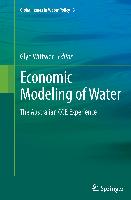Economic Modeling of Water
BücherAngebote / Angebote:
As anthropogenic climate change accelerates, leading both to weather unpredictability and extremes, the issue of water use and extraction has never had a higher profile. There are few places where the problems of water management are more urgent than Australia, where drought, overextraction and salinisation have become major policy concerns, and where widespread and prolonged water shortages have spawned major shifts in urban water supply policy. This volume examines economic CGE (computable general equilibrium) modeling that, while applicable to a wide array of policy issues, has in practice been deployed largely in assessing water supply and management. It focuses in part on the vital Murray Darling Basin, Australia’s most significant source of riverine water supply, where environmental restoration and regional economic needs entail a complex balancing act.The book details the innovative TERM (The Enormous Regional Model) approach to regional and national economic modeling, and explains the conversion from a comparative-static to a dynamic model. It moves on to an adaptation of TERM to water policy, including the additional theoretical and database requirements of the dynamic TERM-H2O model. In particular, it examines the contrasting economic impacts of water buyback policy and recurring droughts in the Murray-Darling Basin. South-east Queensland, where climate uncertainty has been borne out by record-breaking drought and the worst floods in living memory, provides a chapter-length case study. The exploration of the policy background and implications of TERM’s dynamic modeling will provide food for thought in policy making circles worldwide, where there is a pressing need for solutions to similarly intractable problems in water management.
Folgt in ca. 5 Arbeitstagen




